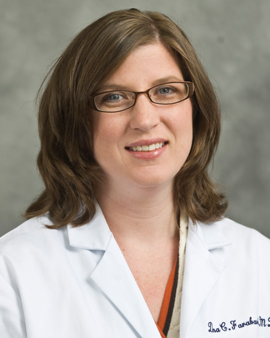
HOW DOES MEDICAL EDUCATION work when a medical school doesn’t own a hospital or health system?
Drexel has always operated with a distributive model of clinical education. This means that, rather than owning a hospital or health system, we have established longstanding affiliations with many very strong clinical partners that play a key role in educating our students. Currently, we have affiliate sites in Pennsylvania, New Jersey, Maryland and California. They provide us with a large faculty base and give students the chance to explore many different opportunities in medicine. Our students spend their third and fourth year at these affiliate sites, where they have the ability to do clinical rotations in urban, rural and suburban settings.
HOW MANY AFFILIATES DOES the College of Medicine currently have?
We have six regional medical campuses that have the capacity to provide clinical education for our students for their entire third and fourth years. We also have 12 academic clinical campuses that offer some of the required rotations. In addition, we have 18 independent family medicine practices that serve as campuses for family medicine rotations only.
HOW DOES AN INSTITUTION become an affiliate?
We put a great deal of effort into establishing partnerships with each institution as an affiliate, and our goal is to make sure that it will provide an optimal learning environment for our students. When we look at potential clinical affiliates, we want to be certain that there is a stable infrastructure for student education, the physicians want to be physician-educators, and they have an interest in being part of a college of medicine and working with students. We have a lot of discussion before a hospital or system becomes an affiliate to determine that they have enough patient volume to support medical education programs and the resources that our students need while on rotations. We want to ensure the relationship is a great fit for our students.
Hospital systems or institutions also reach out to us. A community hospital may be interested in adding academics to their institution, or a hospital that already educates medical students from other institutions may want to expand. We also regularly touch base with our academic clinical campuses to assess their interest in expanding their rotation offerings to include additional disciplines for our students.
WHAT ARE THE BENEFITS to students with this type of model?
The distributive model enhances clinical education by giving students many more opportunities to explore career possibilities with different health systems, patient populations and communities, as well as learning ways that medicine is practiced differently in different arenas. This helps them learn what disciplines and practice settings they have an affinity for when it comes to their residency selection or where they intend to practice medicine as their career.
When students experience different health care environments and learn how to work within those environments, it enhances their adaptability and flexibility in pursuing their medical career. If they’re doing rotations at different sites, they’re learning different electronic health records, different processes used for procedures and different management styles for patient care.
Learning adaptability and flexibility really helps to prepare them for success in their residencies. These skills are much easier to acquire when students do their rotations at different clinical sites rather than all in one place. The majority of our students recognize this benefit and many choose to rotate across our affiliates.
We get a lot of positive feedback from our students. Even students who thought they wanted to do a whole year at one affiliate site are often pleasantly surprised at how much they have enjoyed rotating at different sites and how much they learned.